

While the ancient Romans did not invent coinage, they certainly embraced the idea of a standardized, circulating medium of exchange and issued thousands of coin design types over the course of many centuries. Roman coins are surprisingly abundant, available and collectible today, even on a modest budget. Most of these coins come from archaeological or accidental finds. Hoards buried or obscured since antiquity are still being discovered today.
Buried coins are often corroded or otherwise impaired, though sometimes a particularly well sealed and preserved stash is unearthed. Britain has been a particularly rich source - they even have treasure trove laws and legal procedures for just this situation. In summer 2011, a hoard of 3,784 mostly bronze Roman coins was discovered in Worcestershire, UK (west of Birmingham) by amateur treasure hunters using metal detectors. These coins spanned the years 244 - 282 AD and featured portraits of 16 different Roman Emperors.
The first Roman "coins" dating prior to 500 BC were mere lumps of metal, while the first round coin bearing a distinct design was the Aes Grave just after 300 BC. The silver denarius began circulating approximately 211 BC and was a common denomination spanning Roman Republic and Empire -- it was just larger than a modern US dime, but thicker. Other denominations included the sestertius (a very large and heavy copper coin worth one quarter of a denarius) and the auerus (gold coin about the same size as a denarius, but worth 25 of them). Roman accounts, both public and private were reckoned in sestertii. Many other denominations appeared and disappeared, such as the dupondius, as, antoninus and follis.
Julius Caesar was the first to place his personal portrait on a Roman coin. Prior to that time, busts of the gods or other allegorical symbols were used exclusively. Caesar's move was not so well received at the time. However, this practice became increasingly common over succeeding decades. By the time of Augustus, it was standard practice for newly anointed emperors to issue coinage bearing their portraits on the obverse (head) along with inscriptions citing their accomplishments or other flattery ringing the portrait. The reverse (tail) often featured themes which conveyed how the emperor wanted to be viewed, such as representations of military victories, support of one or more gods or major building projects he completed. Each Roman coin was struck by hand with a heavy hammer and a pair of dies - quite a bit slower than modern coin presses which can strike 45,000 coins in a hour.
Below is a silver denarius issued by Roman Emperor Titus (79-81 AD). Titus completed construction of the Flavian Amphitheater (also known as the Roman Colosseum) eight years after it was begun by his father Vespasian in 72 AD. The obverse of this denarius features the Emperor's portrait, facing right with laurel wreath crown, while the reverse shows an elephant, walking to the left.
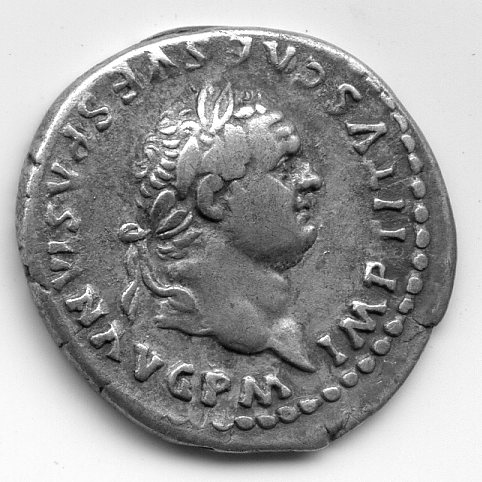
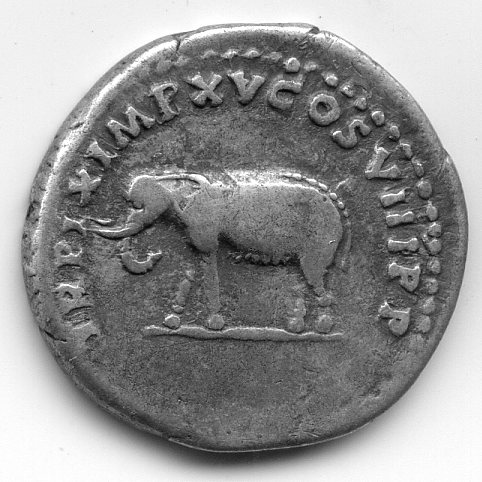
Almost all coins of the Roman Empire include an inscription ringing the coin's outer circumference. Let's decode the inscriptions on both sides of this one:
Obverse: (starting at lower right, 5 o'clock position):
IMP = Imperator
TITVS = Titus
CAES = Caesar
VESPASIAN = Vespasian (his father)
AVG = Augustus
PM = Pontifex Maximus
Reverse:
TRP IX= Tribunicia Potesta, 9th Year (Power of the Tribune to veto legislation)
IMP XV = Imperator, 15th Year
COS VIII = Consul, 8th Year (one of two senior officials elected annually)v
PP = Pater Patriae (father of his country)
The inscription on the reverse allows us to date this coin exactly to the year 80 AD. It was struck at the Rome mint.
Below are two additional examples of Roman silver denarii; one of Emperor Antoninus Pius.
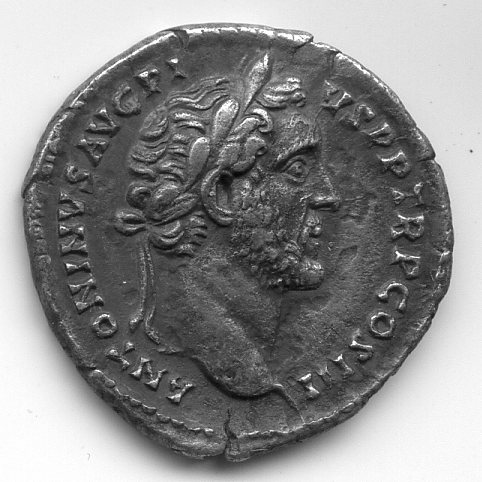
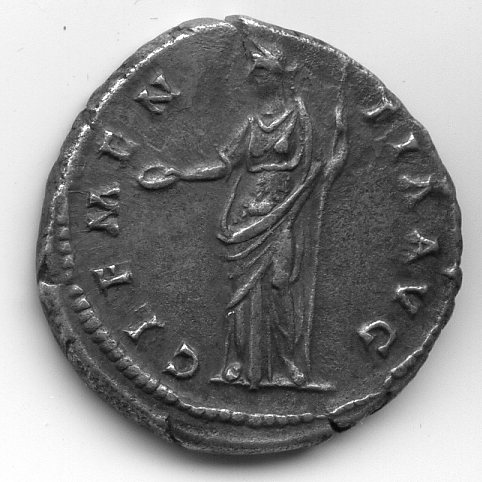
And another of "Philosopher Emperor" Marcus Aurelius. Both were among the 'five good Emperors" of the second century AD.
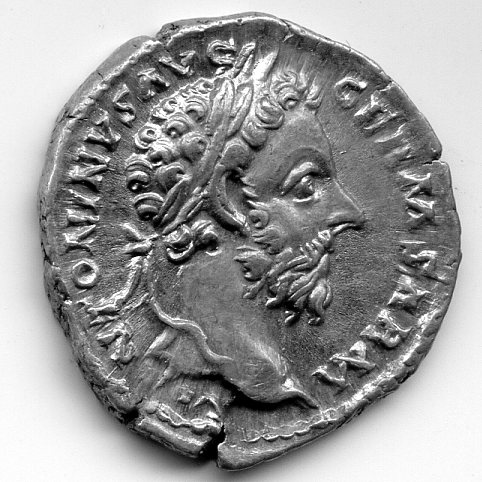
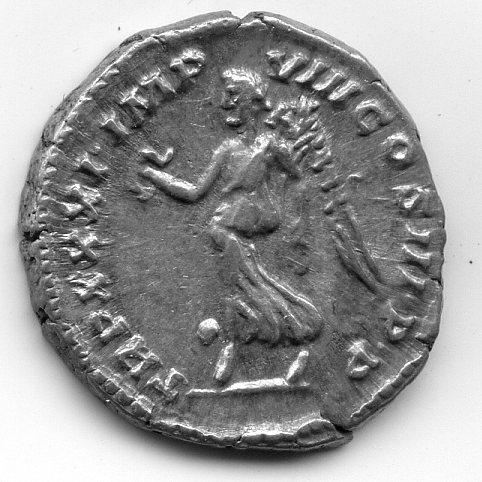
Emperors often chose to place other portraits besides their own on coins they issued. Common examples include wives, sons (who they often intended to become their successors) or even friends. Here's a late Roman bronze coin called a "follis" (about the size of a US quarter) bearing a portrait of Crispus, son of Constantine ("The Great"). Crispus met an untimely demise when Constantine's wife Fausta falsely accused him of wrongdoing. Fausta subsequently paid for her treachery in a rather unusual manner. The coin below was struck at the Roman mint in Siscia (in what is now central Croatia) between 316 and 326 AD.
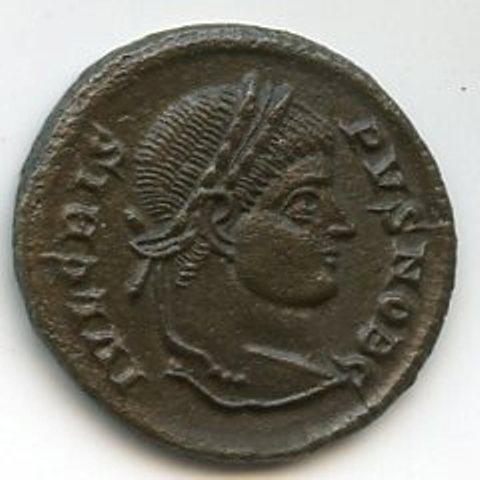
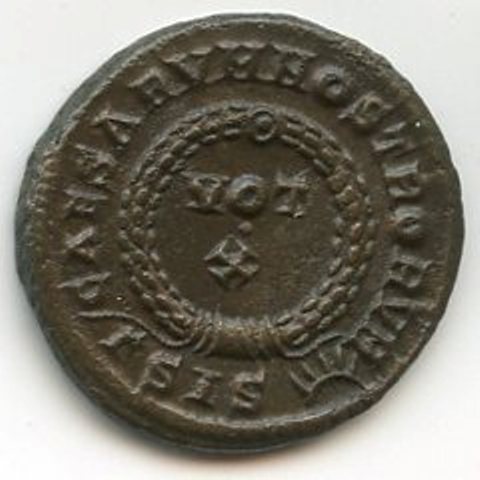
Fortunately for us in the twenty-first century, ancient Roman coins are quite available. This doesn't necessarily mean they're always inexpensive. Prices can vary tremendously, influenced of course by the number originally struck and subsequently found. Emperors such as Augustus, who reigned a long time, had ample opportunity to issue a great number of coins of many different types. Coins of other emperors who didn't exactly hang around long (e.g., Galba, Otho, Vitellius) are quite rare.
State of preservation is important, both the amount of wear from circulation in commerce of the day and how well the coin was preserved and isolated from the elements during its multi-century journey to the present. Centering of designs on the coin also strongly influences its desirability and hence its value / price.
As examples, silver denarii in collectible condition of second century AD Emperors Trajan or Hadrian can be obtained for a bit more than $100 each, while those of later Emperors (e.g., Septimius Severus or Caracalla) are even less expensive. Late Roman bronze coins are particularly affordable. It is possible to accumulate a portrait collection of Constantine's family (including his mother Helena, wife Fausta and all sons) in very nice condition for about $50 each.
The best bargains of all can emerge from coin dealers' "junk boxes", where some diligent searching can sometimes yield an unattributed coin of historical significance. Once I obtained for $10 a silver denarius issued by Marcus Antonius to pay his troops and sailors just prior to the Battle of Actium in 31 BC. It's not exactly a museum quality piece, but I have wondered who might have held it and what he might have purchased with it over two thousand years ago.
Last September an example of what is arguably the most famous of all ancient Roman coins was sold at public auction - the EID MAR silver denarius issued by Brutus just prior to the Battle of Phillipi in 42 BC.
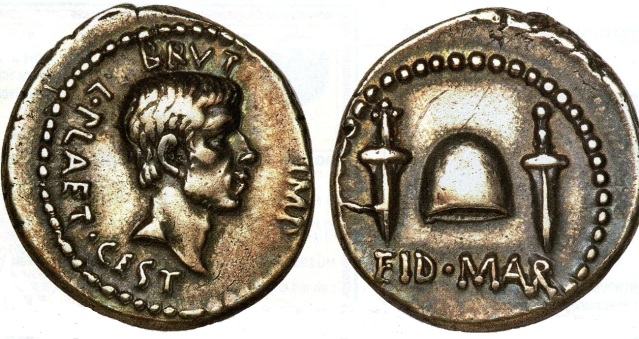
This is the only Roman coin ever to commemorate a homicide - the assassination of Julius Caesar on the Ides (15th) of March, 44 BC.
Numismatic scholars say the Eid Mar denarii were struck in late summer or early autumn of 42 BC when Brutus and Cassius were in western Asia Minor or perhaps Northern Greece, gathering for battle against the combined forces of Octavian (later to become Augustus) and Marcus Antonius.
The obverse features a portrait of Brutus himself (highly unusual at that point in Roman history). The reverse shows a pileus (cap of Liberty) between two daggers (certainly those used by Brutus and Cassius personally).
The legends on obverse and reverse (decoded) are:
BRVT = Brutus
IMP = Imperator
L PLAET CEST = Lucius Plaetorius Cestianus, a Lieutenant in Brutus' forces, who was likely responsible for the coining operation, including personally attesting to the weight and quality of the silver.
EID MAR = Eidibus Martiis - the Ides of March.
This coin was so remarkable for its "in your face" propaganda even in ancient times - it was recorded and remarked by Dio Cassius in the early 3rd century AD.
Estimates suggest perhaps 80 to 100 of these coins survive today. Most are in poor to fair states of preservation. The coin pictured is quite nice - graded Extremely Fine by Heritage Galleries, who conducted the auction.
The final hammer price? A modest $546,250. (After all, it's in pretty nice condition).
If you are interested in learning a bit more about ancient Roman coins, here are two excellent and very readable introductory guides:
Ancient Coin Collecting III - The Roman World - Policies and Propaganda by Wayne G. Sayles
Handbook of Ancient Greek & Roman Coins by Zander H. Klawans edited by Ken Bressett (paperback).
Geoff